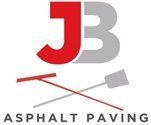Services
At J.B. Asphalt, we provide all services related to the preparation for and placement of asphalt pavement. Our services include...
Preparation:
- Grading for proper slope with crushed rock
- Excavation of old asphalt
- Removal and disposal of grass and landscaping
- Minor drainage work - install drains and pipes
We also work together with reputable local contractors to provide the following services:
- Parking lot striping
- Curbing
- Concrete flat work - parking pads, walkways, curbs
- Retaining wall work
- Major excavation and drainage
- Seal coating
- Crack filling
Asphalt Paving:
- Patching
- New construction driveways
- Plat paving - new developments
- Resurfacing driveways for homeowners
- Parking lot paving and overlays
- City street restoration and re-paving
- Sidewalk and pathway paving
- Commercial parking lot maintenance
FAQ's
Q: How does the weather impact paving operations?
A: Most projects an be completed year round, with only a few exceptions...
- Dry pavement is required for an overlay (new layer of asphalt placed over existing asphalt
- Thawed ground is required for all paving operations. No asphalt can be placed in frozen conditions
- A steady rain cancels all paving operations. Minor rain / showers do not impact most jobs
Q: What can be done about tree roots pushing up through asphalt
A: Trees in close proximity to asphalt often cause damage.
- Most situations where the tree will remain in place (not get cut down) we simply remove the asphalt, regrade and compact a new crushed rock base, and re-pave the area. This is not a permanent solution, as the roots will continue to grow. We anticipate 3-7 years before the roots show back through again.
- If the tree is cut down, then we prefer to remove al the tree roots from underground, place and compact new crushed rock base, and re-pave the area. This is a permanent solution.
Q: When can you overlay (place new layer over old asphalt) versus remove and replace the asphalt?
A: Overlay is often a much more affordable option, so we try to use this avenue whenever possible. Our general rule of thumb is based on how damaged the existing asphalt is.
- Is the asphalt is cracked but solid (does not move under traffic) then it can be overlayed.
- If the asphalt is loose, crumbling, or moving under traffic, it needs to be removed and replaced.
Q: Do I need to seal my asphalt?
A: Asphalt does not HAVE to be sealed (seal coated). City streets and highways are not sealed, and seal coating is not a practice that public roads use. The main purpose of seal coating is to "freshen" the look of a driveway or parking lot; make it look again. Seal coating will also fill small cracks or imperfections and can prevent water from penetrating the sub-grade.
Q: How long does asphalt last?
A: There are many factors that decide the life expectancy of asphalt. Here are the 2 most prominent:
- The base material - asphalt is a "flexible pavement" and relies on the strength and firmness of what under it. A solid base, usually crushed rock or something similar, is a major contributor to life longevity of asphalt.
- The thickness of the asphalt also contributes significantly to the life expectancy of asphalt. Typical minimum thickness for private work (driveways, parking lots) is 2", which city streets are ofter paved with up to 8" of asphalt.
Q: What do I do about potholes?
A: The best way to address a pothole is to cut (trim the edges), excavate the excess material, and patch the area with asphalt
Q: Hot do I choose between asphalt and concrete?
A: Often this decision comes down to cost. Concrete is more expensive (often 2-3 times more expensive) and is also typically not allowed on city properties (i.e. connect to a city street).
